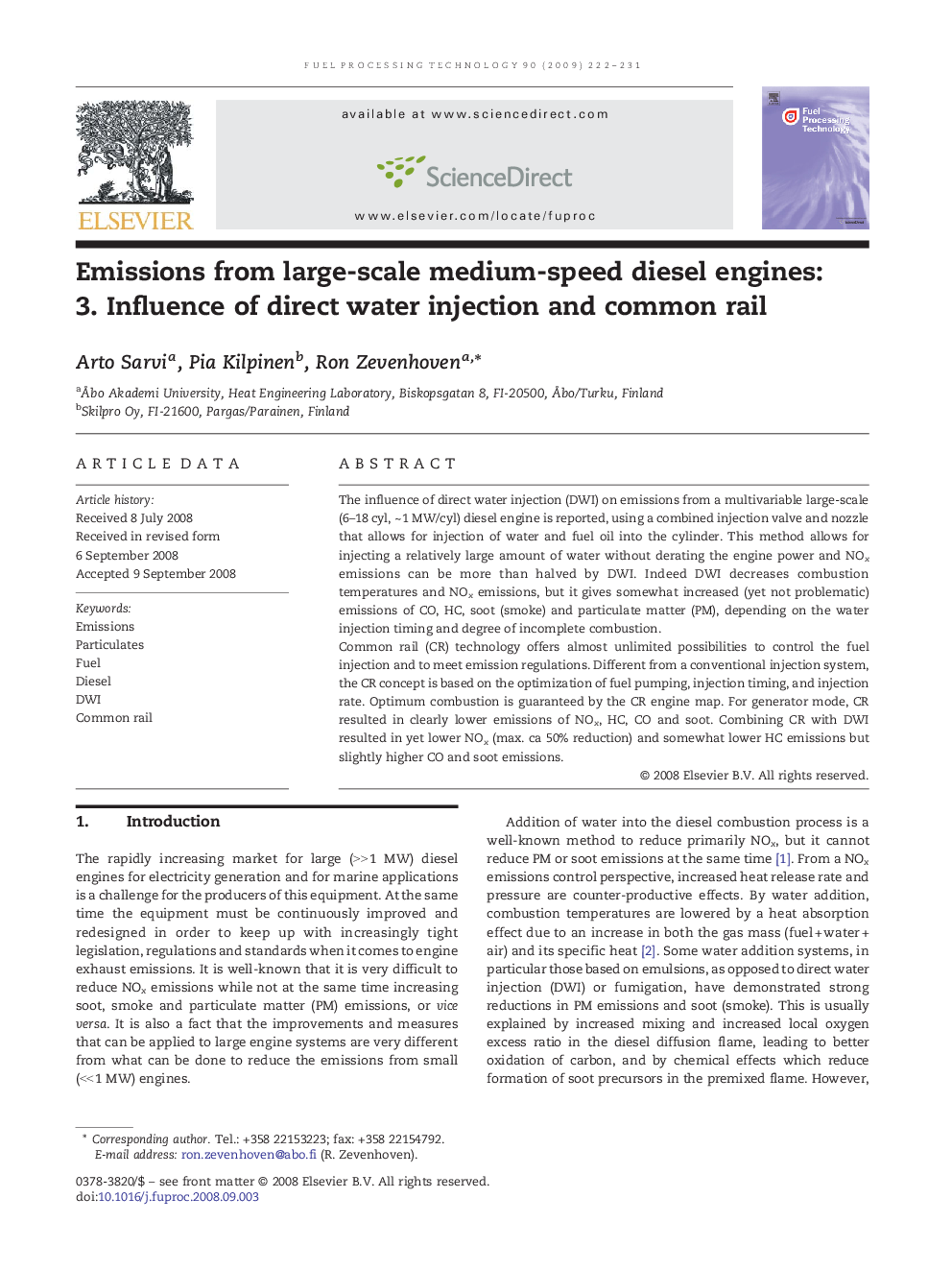| Article ID | Journal | Published Year | Pages | File Type |
|---|---|---|---|---|
| 211330 | Fuel Processing Technology | 2009 | 10 Pages |
The influence of direct water injection (DWI) on emissions from a multivariable large-scale (6–18 cyl, ~ 1 MW/cyl) diesel engine is reported, using a combined injection valve and nozzle that allows for injection of water and fuel oil into the cylinder. This method allows for injecting a relatively large amount of water without derating the engine power and NOx emissions can be more than halved by DWI. Indeed DWI decreases combustion temperatures and NOx emissions, but it gives somewhat increased (yet not problematic) emissions of CO, HC, soot (smoke) and particulate matter (PM), depending on the water injection timing and degree of incomplete combustion.Common rail (CR) technology offers almost unlimited possibilities to control the fuel injection and to meet emission regulations. Different from a conventional injection system, the CR concept is based on the optimization of fuel pumping, injection timing, and injection rate. Optimum combustion is guaranteed by the CR engine map. For generator mode, CR resulted in clearly lower emissions of NOx, HC, CO and soot. Combining CR with DWI resulted in yet lower NOx (max. ca 50% reduction) and somewhat lower HC emissions but slightly higher CO and soot emissions.
